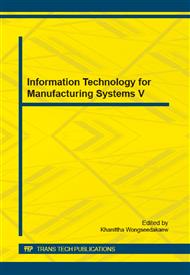[1]
Jun Wang, Yan Wang. Performance improvement of VAV air conditioning system through feedforward compensation decoupling and genetic algorithm [J]. Applied Thermal Engineering, 2008, 28: 566-574.
DOI: 10.1016/j.applthermaleng.2007.04.011
Google Scholar
[2]
Shui Yuan, Ronald Perez. Multiple-zone ventilation and temperature control of a single-duct VAV system using model predictive strategy. Energy and Buildings, 2006, 38: 1248-1261.
DOI: 10.1016/j.enbuild.2006.03.007
Google Scholar
[3]
Frank Shadpour. DDC Systems as A Tool for Commissioning. ASHRAE Journal , 2001 (11) : 69-76.
Google Scholar
[4]
Chen L. Narendra K S. Identification and Control of a Nonlinear Discrete-Time System Based on Its Linearization: A Unified Framework. IEEE Transactions on Neural Networks, 2004, 14(3): 663-673.
DOI: 10.1109/tnn.2004.826206
Google Scholar
[5]
Wenhua Li, Jian Sun. Numerical simulation and analysis of transport air conditioning system integrated with passenger compartment[J]. Applied Thermal Engineering, 2013, 501.
DOI: 10.1016/j.applthermaleng.2012.05.030
Google Scholar
[6]
I. Daut,M. Adzrie, M. Irwanto, P. Ibrahim, M. Fitra. Solar Powered Air Conditioning System[J]. Energy Procedia, 2013, 36.
DOI: 10.1016/j.egypro.2013.07.050
Google Scholar
[7]
J.R. Mehta, M.V. Rane. Liquid Desiccant based Solar Air Conditioning System with Novel Evacuated Tube Collector as Regenerator[J]. Procedia Engineering, 2013, 51.
DOI: 10.1016/j.proeng.2013.01.098
Google Scholar
[8]
Ahmed H. Abdel-Salam, Gaoming Ge, Carey J. Simonson. Thermo-economic performance of a solar membrane liquid desiccant air conditioning system[J]. Solar Energy, 2014, 102.
DOI: 10.1016/j.solener.2013.12.036
Google Scholar
[9]
Ahmed H. Abdel-Salam, Carey J. Simonson. Annual evaluation of energy, environmental and economic performances of a membrane liquid desiccant air conditioning system with/without ERV[J]. Applied Energy, 2014, 116.
DOI: 10.1016/j.apenergy.2013.11.047
Google Scholar
[10]
Yong Wang, Kelvin K.L. Wong, Hongmei Du, Jing Qing, Jiyuan Tu. Design configuration for a higher efficiency air conditioning system in large space building[J]. Energy & Buildings, 2014, 72.
DOI: 10.1016/j.enbuild.2013.12.041
Google Scholar


